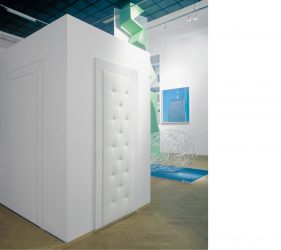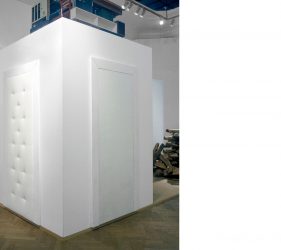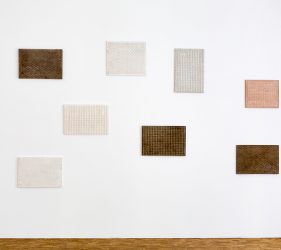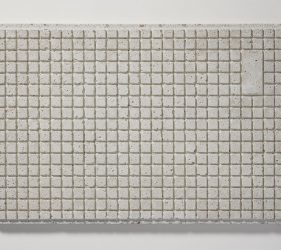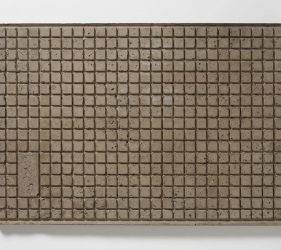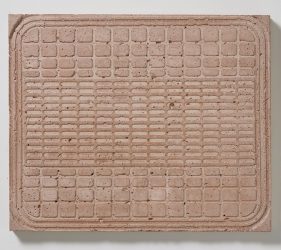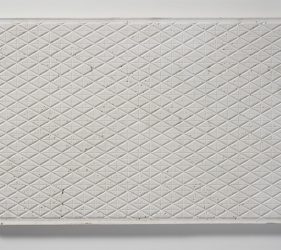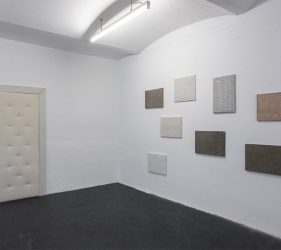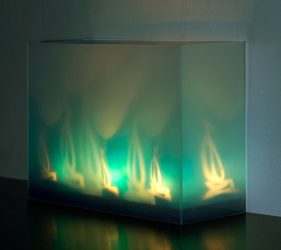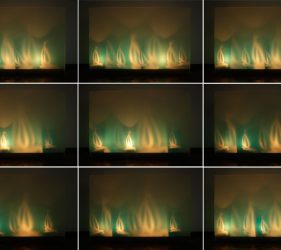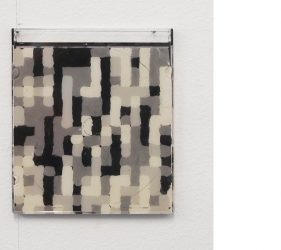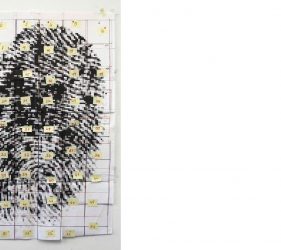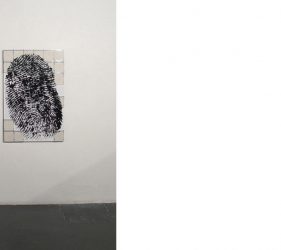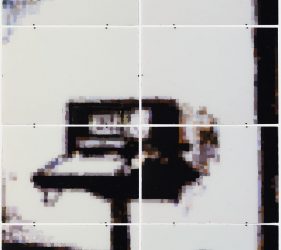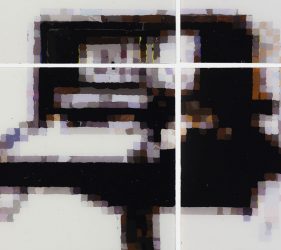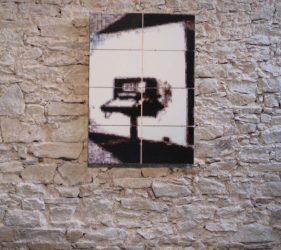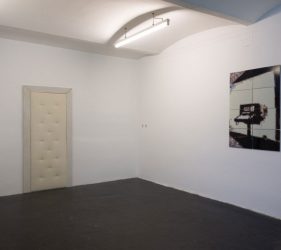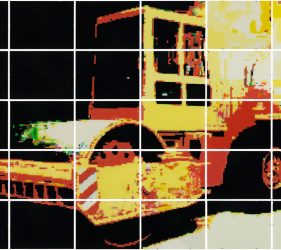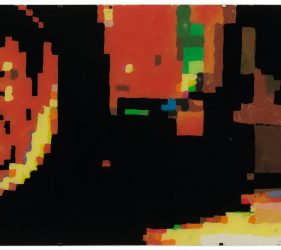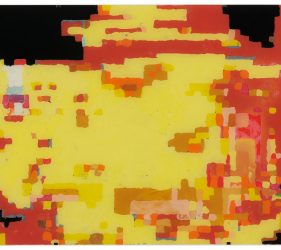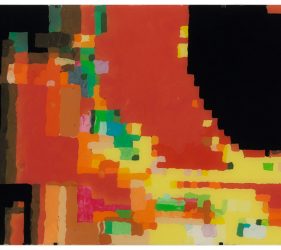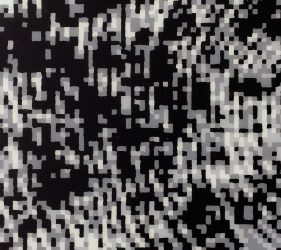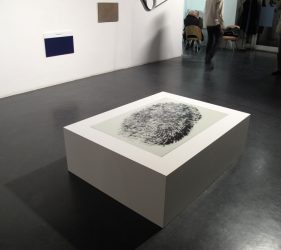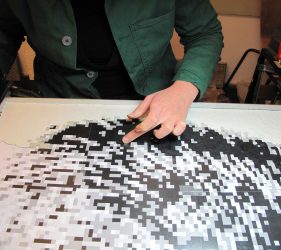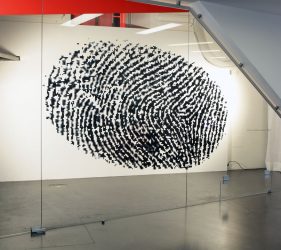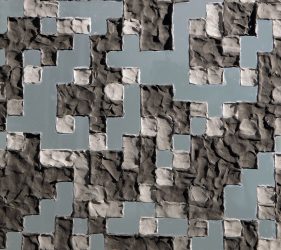Excerpt from:
As Idle as a Painted Ship …
Movement and its Negation
in the Work of Nita Tandon
by Edith Futscher in the catalogue Dimensions of the Surface, p. 42 – 51
[…] movement comes into its own in Departure of the Fleet (2006, pp. 140/141). And it is no surprise that with reference to William Turner’s late painting of the same name (1850), this movement has a sense of ominous foreboding. For the departure of Aeneas from Carthage – like Coleridge’s mariner, a type of Odysseus – also spells doom for Dido. Whereas Turner places the focus on Dido’s farewell, the port’s exit, and the sky golden above the sea, Nita Tandon shows us ships. She placed blue-coated glasses containing tea lights in a small Plexiglas box. Within the blue there are blank areas in the shape of sailing ships. When viewed in a darkened room, the candlelight suggests movement – a moving image beyond the movie – a flickering and bobbing with ‘clouds’ weighing down from the top. The fleet gathers momentum and we see the small ships lurching in succession – some in clear focus, others merging in blurred shapes. Intriguing is the suggestion of a staged scene, atmosphere, the distribution of light and colour, and the transformative powers of fire. And Nita Tandon is also interested in the way Michel Serres understands Turner, as a materialist and as someone who introduced the matter of his time to his imagery, an era when steamers were leaving the sailing ship behind: ‘Turner or the introduction of fiery matter into culture. The first true genius in thermodynamics.’ 12 This fire engulfs the elements, especially its opponent water; it engulfs the picture, drawing, form, depiction. In Turner’s work the picture itself becomes a ‘furnace’.13 In Nita Tandon’s Departure of the Fleet the history of Dido and
Aeneas has vanished and probably the sailing ship as the sign of a bygone epoch along with it. Her tribute is not so much to this particular painting but to Turner’s consistency in drawing our gaze to regattas sweeping past like weather fronts. On the one hand, these cannot and could not hold their own against fire; on the other, they pose a challenge to eyes that seek to capture and contain.
In Departure of the Fleet Nita Tandon also explores a picture as well as the picture per se. Although in experimenting with various materials, such as concrete, Plasticine, text, and fire, she is dealing with a class of objects, when taken as a whole her works present plenty of scope for that ever-topical question about what constitutes a picture, a term in the singular, a question that can be posed time and again, is repeated, and gives rise to a multitude of answers.
12 Michel Serres, Hermes: Literature, Science, Philosophy, ed. Josué V. Harari and David F. Bell (Baltimore and London: John Hopkins University Press, 1982), 57. Serres’s principal witness is Turner’s The Fighting Temeraire, Tugged to her Last Berth to be Broken Up, 1838, London, National Gallery.
13 Ibid., 61.

